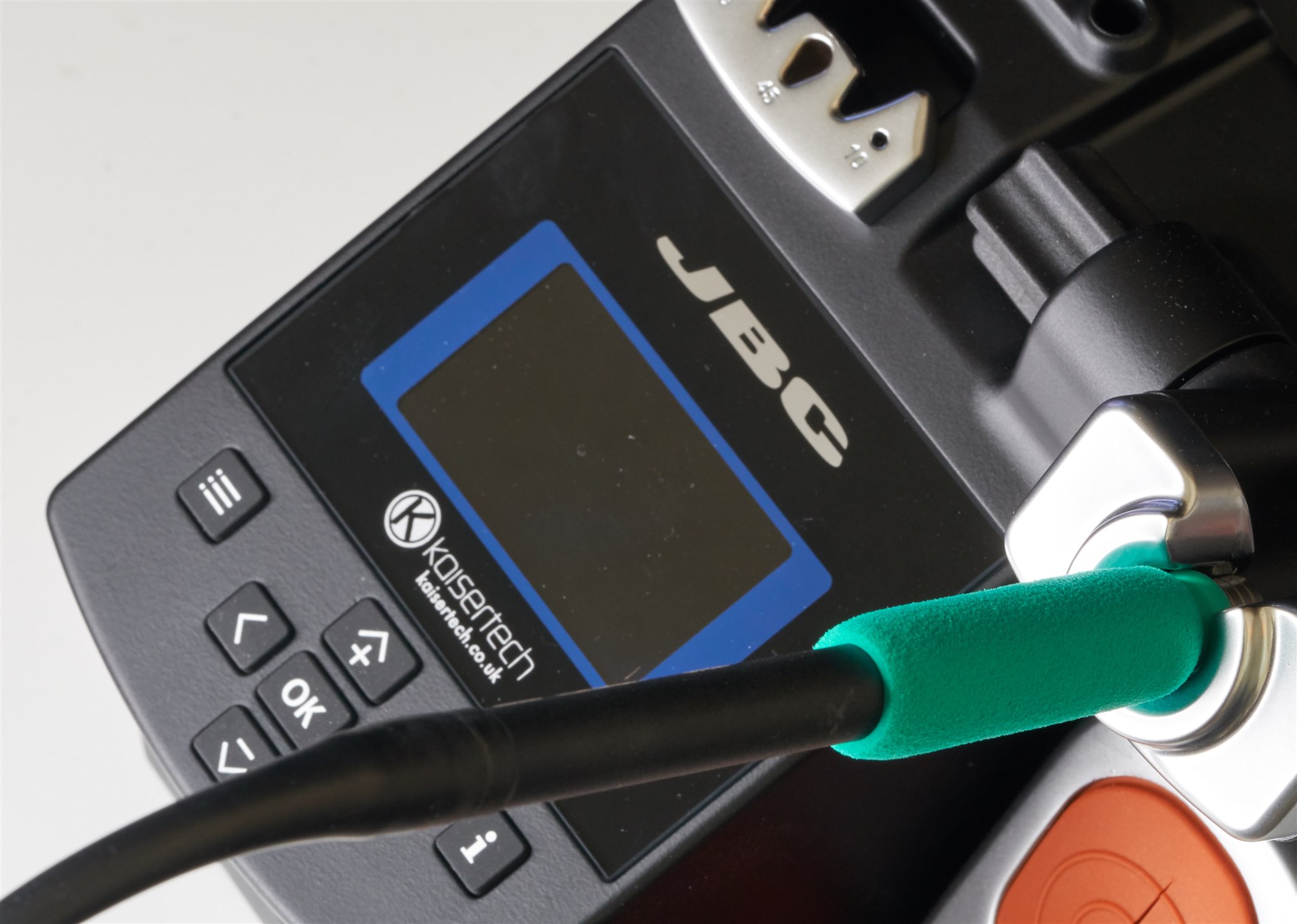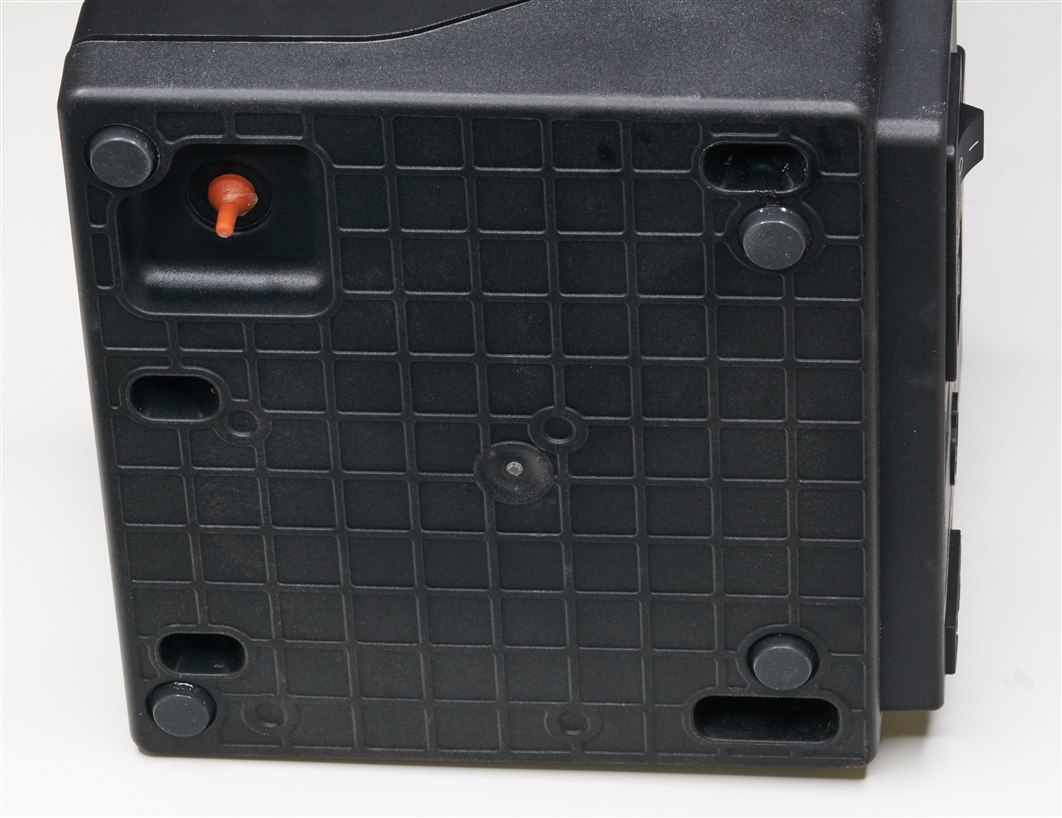Table of Contents
Introduction
My old JBC soldering station was purchased second-hand about a decade ago, and it recently started playing up. I thought I had fixed it, but I’ve noticed the temperature fluctuates and it’s made soldering sufficiently difficult that it was time to replace it.
There’s quite a spread of purchasing options for soldering stations, ranging in cost from about £100 to £1000 and beyond. Some of the top brands to consider are JBC, Weller, Metcal and Pace. I have used three of these brands in the past, they would all be excellent choices.
The higher-end systems are often modular, allowing for different tool handles to be connected, sometimes simultaneously, as well as offering hot air and vacuum options for reflow and desoldering. I went for an in-between system that has some modularity (two different tool handles can be connected but not simultaneously) but is lacking hot air capability.
I went with JBC’s ‘Compact’ CD line, which is an all-in-one unit that occupies a footprint just slightly larger than a compact disc (CD) case, by coincidence. The price was reasonable; for about £550 (all-inclusive of taxes and shipping) I received the control unit, the tool handle, and two soldering tips of my choice, plus steel wool for cleaning the tips (it was unnecessary; the system already comes with brass wool). The ordering codes are a bit weird; you can order JBC CDS or CDB, they both have the same base soldering station with up to 125W power output, but they come with a different tool handle depending on the ordering code.
JBC CDS / CDB 'Compact' Soldering Station
The photo below shows the entire system minus the soldering tool itself. There’s lots to like here; from left-to-right, there is an easy-to-use menu system with lots of buttons and a good-sized monochrome backlit dot-matrix display. There is an in-built tip holder, and just below that is the tip remover, for hot-swapping while the soldering station is still powered up. To the right, there are several tip cleaning features, with a tip wiping area, optional sponge location (I’m not going to use the sponge), and a metal wool holder for more thorough cleaning than the sponge method. The tool holder is hinged; the ergonomics are great. The holder auto-detects tool insertion, so that the station can reduce the tip temperature to an intermediate value (known as standby mode), or allow the temperature to reduce to room temperature (hibernate mode).
The antenna-like feature at the far right is normally angled vertically, and it supports the very flexible soldering iron cable, so that it doesn’t drag on the desk when the user is soldering.

The soldering station works with two sizes of soldering tools (handles); they are known as types T245 and T210. The larger T245 is more general-purpose, with a huge range of tips. When the T245 tool handle is used, the soldering station offers up to 125W of power. With the smaller T210 tool inserted, the maximum power is 40W.

The T210 (shown in the photo below) is ideal for finer soldering tips. The T245 and T210 tools (handles) are reasonably priced (£60 plus tax). The metal tool holder auto-detects when the tool is inserted, and the soldering station automatically identifies which of the two tool handles is plugged in.

Interestingly, there’s two fuses on the rear; one of them is for the ESD ground connection, and the software automatically alerts if that fuse is blown. The USB connection is used for both firmware upgrades, and for interfacing with specialist software from JBC that can capture real-time soldering station measurements during use, for production environments.

There is nothing much to see on the underside. The orange parts of the soldering station can be easily removed and replaced.

I like that the user interface is actually user-friendly (there’s even a dedicated help push-button!). It is very easy to use, without requiring reading the user manual. I made a few changes to suit my needs, but the defaults also seemed fine. The buttons beep, but it’s not too loud, so I didn’t switch that off in the menu.
The menu allows for several modes of operation, mostly to suit production environments. The default mode meets my needs better; a lab environment, where the user is free to set the desired temperature in either 5 degree steps (by pressing the up/down buttons) or 50 degree steps (by pressing the left-right buttons). This is extremely simple, and suits me perfectly. The display is clearer than I could photograph it.

There is another almost identical JBC compact station with a color TFT screen, but it currently costs about £100 more, and I couldn't see a significant benefit for lab or DIY use (for production or education/training use, that model can plot and compare solder joint performance by monitoring the thermal demand continuously, but the implementation seems of very limited value). For a video review of that station, see here:
Quick Tryout
I only recorded 20 seconds or so of video footage of the system in action. The video shows how quick the soldering tip heats up; quicker than the time it took me to touch the solder to the tip.
The video shows the T210 handle and a small 1mm tip being used on a very large copper plane. Obviously, a larger tip would normally be advised for that, but it’s nice to see that the small tip has no issue; the temperature never dropped to the point where the solder could potentially stick; heat is continuously and rapidly pumped so that didn’t occur, and it was all a smooth experience. It also works for fine surface-mount joints, where there may be very little contact area, but the iron will can deliver sufficient heat, and it gives me confidence that good joints will be made. I have used JBC soldering tips for about 10 years, and I have no complaints about performance.
Negatives
There’s lots to like about the JBC soldering station, and I’m neutral on the cost of the tips (they are not cheap for sure, but they last for ages from my experience [lab, not production use]) but these were the things I didn’t like:
1. I didn’t like so much plastic close to the soldering tool. It would be better if the entire top half was metal, with a glass cover on the display
2. I prefer the soldering tool stand to be separated from the control unit. JBC does sell separated control units, but the cost difference is quite a leap.
3. When cleaning some tips, they occasionally get caught up in the metal wool. This happens on the soldering tips with a bulge near the end, when you poke the bulge part too deep into the wool.
4. There is no tweezer tool capability with the compact station. Personally, I don’t mind this at all (I don’t desolder enough to warrant a dedicated tool for that) but it may well be a requirement for others, especially if you’re removing parts for modifications on hundreds of production boards. If there is a chance you need tweezers, then the JBC DI or DDE modular control unit could be purchased, which will cost more than the compact station.
Summary
The all-in-one JBC CD ‘compact’ soldering station seems very well built and hopefully should provide great performance for many years to come, using the pretty mature T240 and T210 tool handles that accept hundreds of different integrated-heater fast-responding soldering tips between them.
The positives are the excellent performance of course, as well as very decent ergonomics and usability with the easy-to-navigate controls and menu. The tips will last a long time with the in-built sleep and hibernation modes that can kick in between every (or almost every) solder joint depending on configuration.
The compact system is lower-cost than the more modular versions that JBC offers, but of course there’s less flexibility, in particular, there’s no built-in hot-air or vacuum capability, and no desoldering tweezer option either.
Thanks for reading!
